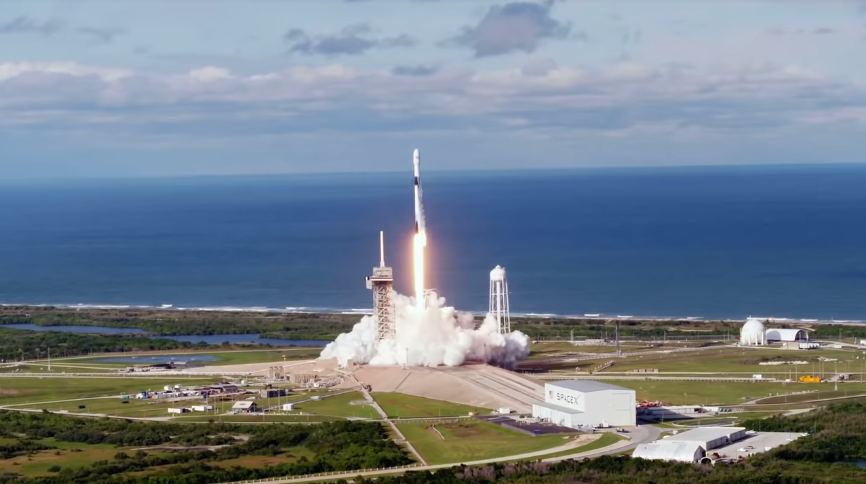 EMERGING TECH
EMERGING TECH
 EMERGING TECH
EMERGING TECH
 EMERGING TECH
EMERGING TECH
Thursday night marked yet another milestone for Elon Musk’s SpaceX Corp.
At precisely 10:30 p.m. EDT, the company launched a Falcon 9 rocket from Cape Canaveral Air Force Station in Florida with 60 Starlink internet satellites aboard. Just over an hour later, 273 miles about the launchpad, the spacecraft were released into their low Earth orbit perch.
The deployment brings a successful conclusion to a closely watched mission that had to be delayed not once but twice because of bad weather. The 60 satellites now floating in space form the first link of what SpaceX envisions will be a sprawling orbital broadband network. To achieve its long-term goal of providing global internet coverage, the company plans to release nearly 12,000 Starlink satellites above the planet eventually.
SpaceX may start offering broadband services to interested customers much sooner. In a media call ahead of the launch, Elon Musk told reporters that the Starlink network will likely be capable of providing limited connectivity after just six more launches. With 23 more successful satellite deployments, the fleet will be big enough to provide at least some internet coverage in almost every part of the world.
The income from a global broadband service could go a long way toward helping SpaceX’s finance its ambitious space travel plans. During the media call, Musk said that capturing just 3% of the global internet market would provide the company with $30 billion in annual revenue. That’s compared with the estimated $2 billion SpaceX raked in from commercial launches last year.
SpaceX is not the only company with a vision to extend the world’s internet infrastructure to space. Amazon.com Inc. is reportedly working on a similar initiative, Project Kuiper, that seeks to deploy a fleet 3,236 of broadband satellites in low Earth orbit. A third contender is London-based OneWeb Ltd., which plans to have a constellation of 650 internet satellites in orbit by 2021.
The significance of Thursday’s launch extends also beyond the race for space-based connectivity. The Falcon 9 carrying the satellites flew off with more than 37,000 pounds of mass, making it the heaviest payload in SpaceX’s long launch history.
It took a great deal of inventiveness on the part of the company to keep the load within the rocket’s carrying capacity. SpaceX skipped the heavy release systems that are normally used to set spacecraft afloat in orbit, instead turning the Falcon 9 itself into the deployment mechanism. The upper stage of the rocket started rotating when it reached the designated attitude, causing the satellites to fan out into space like a deck of cards being spread out on a table.
As for the Falcon 9’s first stage, it detached a few minutes earlier and landed safely on a robotic barge in the Atlantic Ocean.
Support our open free content by sharing and engaging with our content and community.
Where Technology Leaders Connect, Share Intelligence & Create Opportunities
SiliconANGLE Media is a recognized leader in digital media innovation serving innovative audiences and brands, bringing together cutting-edge technology, influential content, strategic insights and real-time audience engagement. As the parent company of SiliconANGLE, theCUBE Network, theCUBE Research, CUBE365, theCUBE AI and theCUBE SuperStudios — such as those established in Silicon Valley and the New York Stock Exchange (NYSE) — SiliconANGLE Media operates at the intersection of media, technology, and AI. .
Founded by tech visionaries John Furrier and Dave Vellante, SiliconANGLE Media has built a powerful ecosystem of industry-leading digital media brands, with a reach of 15+ million elite tech professionals. The company’s new, proprietary theCUBE AI Video cloud is breaking ground in audience interaction, leveraging theCUBEai.com neural network to help technology companies make data-driven decisions and stay at the forefront of industry conversations.